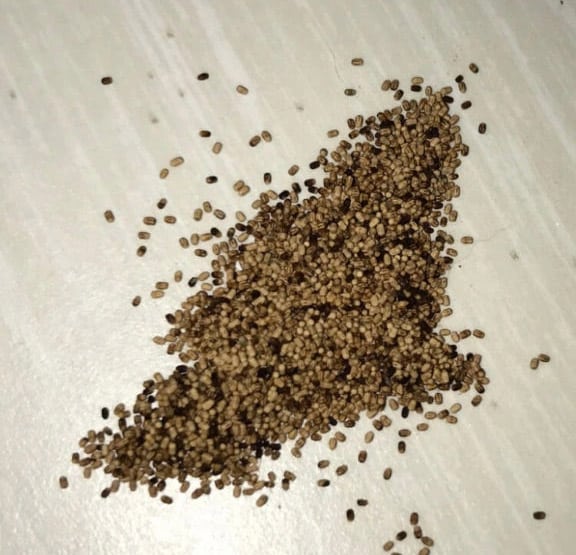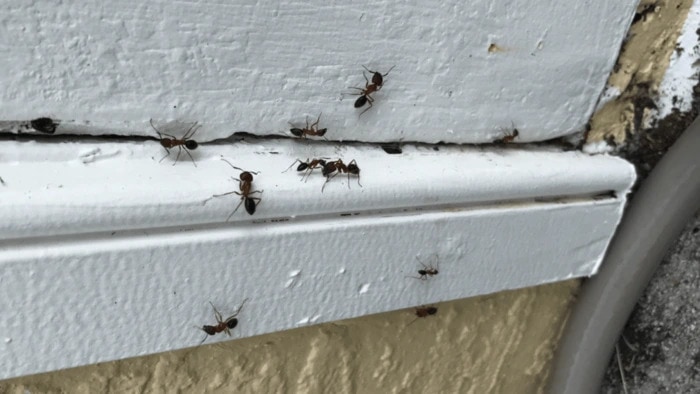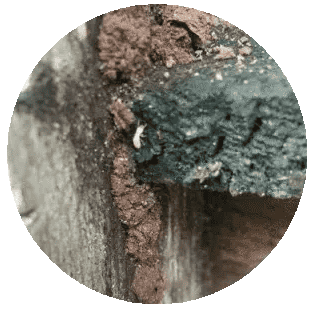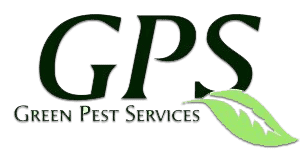Guide to Ants and Termites
Know What Could be Living Inside Your Walls
Here we will attempt to answer some of the most frequently asked questions regarding evidence and treatment of termites as well as specific ants that are commonly found living inside the walls of homes.

First, what are we looking at here?
It’s important to accurately identify what the material is that’s appearing in your house. Drywood Termite droppings are often mistaken for dirt or sand. This variety of termite creates very small holes in areas where they are feeding and eject the colony’s fecal matter through these openings. The reoccurring presence of termite fecal pellets is a sure sign of infestation.
Look closely at the material, if it is all the exact same shape and size, with very little other types of material mixed in, it is likely you have a termite problem.
Conversely, if upon close inspection it’s clear there are a variety of materials present, and of different shapes and sizes, in all likelihood, it is dirt that is accumulating in your home and this may be from ants or some other issue.

Drywood Termite Pellets
Where exactly is it located?
The exact location of the “dirt pile” can also be an important clue as to the culprit. Baseboards and windowsills can collect small amounts of dirt over the normal course of daily life. However, if the dirt appears to be coming out from within the window frame or from behind the baseboard, you’re likely looking at something more significant than just what the wind blew in.
If the substance appears to be sticking together and to the wall, as opposed to just having fallen there, this too can be a sign of something more nefarious. Subterranean Termites, unlike their Drywood Termite cousins, need a moist environment to survive, similar to what they find underground. For this reason, Subterranean Termites build mud tubes along the surface of the object they feed on to insulate themselves from the dryer surrounding air.
If this material is pushed through cracks where the window frame meets the wall or along the trim board and door frames, this is a sign of a Subterranean Termite. Subterranean Termites are different from the Drywood Termites mentioned above and do damage much more quickly. Subterranean termite mud tubes will likely contain both soil and termite feces so it will not have the same uniform consistent shape, and it is also more likely to be sticking to the wall instead of falling to the ground.

Ants bringing piles of dirt into a home from underneath the baseboards
Just plain old dirt on the floor?
Though the collection of dirt and debris around doors and windows is a common occurrence, the consistent buildup of these materials is typically a sign of a pest problem. Some ants such as Fire Ants (Solenopsis Invicta) and Big Headed Ants (Pheidole Megacephala) will often bring dirt into homes in an attempt to nest in the walls of the structure. Big Headed Ants, in particular, are becoming increasingly common. These small reddish-brown ants regularly cause panic among homeowners mistaking their frass or excavated dirt for evidence of termites. These ants will even build mud tubes similar to termites.
How to Know if Ants are Living in Your Walls
Aside from cutting a hole in your drywall, it can be difficult to know for sure if you have ants living in your walls. There are however some telltale signs as well as certain species more prone to living in homes.
Certain species of ants are more prone to living inside the walls and homes than others. Here are the most common species of ants found living inside wall voids:
- Big Headed Ants
- Carpenter Ants
- Ghost Ants (colloquially referred to as Sugar Ants)
- Odorous House Ants
- Pharaoh Ants
- White Footed Ants
Fire Ants have also been known to live inside walls, though this is less common than the species listed about.
For help identifying these ants and for information on whether or not they can be controlled naturally check out our Ant Identification Guide.

Big Headed Mud Tubes are similar to Termites
How to Get Rid of an Ant Colony in Your Walls
As a general rule, baits should be used to resolve any ant problem inside a house. Deploying sprays can result in the unintended consequence of driving ants into other parts of the home, instead of actually eliminating them. In some species, such as Pharaoh Ants, spraying can cause a reaction called budding. This is when a colony spits and starts a new, separate colony, elsewhere in the home, making matters worse.
Additionally, the actual location of a nest is usually difficult, if not impossible to locate. Worker ants spend nearly every moment of their life exploring and seeking out new sources of food for their colony and quickly bringing it back to the nest. By using baits, you ensure that the ants do the work for you.
The exception to this rule is Fire Ants. Fire Ants pose a health hazard and can react aggressively when a colony is slowly dying from the use of bait. Also, unlike the other ants listed here, the location of a Fire Ant nest in a wall is not difficult to find because they will still bring large amounts of dirt and sand into the house, forming their characteristic mounds. Spray these painful pests immediately and be done with them.

Ants bringing dirt and eggs into the walls.
Wood Ants
Wood Ants, Southern Wood Ants, and Red Wood Ants are an uncommon species of ant in North American. The term “Wood Ants” more often refers to various species of Carpenter Ant. There are many species of Carpenter Ant common in the U.S. and they can vary somewhat in appearance from black to red to bi-colored. In all cases, Carpenter Ants will nest around homes in walls, attics, rotten wood siding, as well as landscaped areas of the yard. Contrary to popular belief, carpenter ants do not actually eat wood, like their termite relatives. They will, however, use their lard mandibles to tear holes and galleries into the wood to make a nest. Soft, damp, or previously damaged wood are particularly susceptible to Carpenter Ant damage.
What are some signs of a Carpenter Ant infestation?
Because Carpenter Ants do not eat and consume wood the way termites do, they do leave very different evidence of their presence. While dry wood termites leave distinct, symmetrical pellets, or “termite dirt” carpenter ants leave behind what is called frass. Carpenter Ant frass is a messy collection of various materials – the bodies and body parts of other insects or small animals they have preyed on, bits of wood they have removed in the course of building their nests, or pieces of insulation, dirt, and sand. This material will basically be a mess, much different from the uniform material left behind by termites.

Carpenter Ants in Port St Lucie Florida
List of Insects that destroy wood and leave behind sawdust-like material.
- Termites
- Carpenter Ants
- Powderpost Beetles
- Wood Boring Beetles
- Old House Borers
- Bark Beetles
- Carpenter Bees
With most wood destroying beetles, the frass material they leave behind will truly resemble sawdust. Lighter and fluffier than termite pellets. Carpenter Ant frass is a messy mix of various materials only partially composed of wood. Termite droppings or dirt, often found falling from the ceiling, will be uniform in shape and size, hard, and with minimal other material mixed in.
Termite Treatments and Termite Damage Abatement
Termite Proofing Chemicals
There are several termite treatment chemicals – termiticides – that are very effective at preventing a termite infestation when they are applied pre-construction. The treatment of timber or lumber, before drywall is hung or finishing products applied to the wood, provides excellent and long-term protection against termite infestation.
Termite treatments conducted during the construction of the home are the most effective and long-lasting. They also come with several other benefits. Most of these treatments are done using borate-based products. Though not exactly boric acid or borax like you might pick up at the hardware store, they are mineral based and therefore considered “green” and a more natural way to kill drywood and subterranean termites. These organic options and generally less hazardous than other termite treatment chemicals.
What is the cheapest way to get rid of termites? Prevent them.
Termite remediation is often an unexpected expense that can add up fast. Subterranean termites often attack outside load-bearing walls. Replacing destroyed beams can be more complicated – and expensive – if supports have to be built while replacing the damaged wood. General contractors usually charge by-the-job but at a rate of around $100 per hour. On top of replacement costs, the existing termite colony will need to be exterminated as well, often at a price that is higher than a preventative treatment would have been.
Preventative treatments for termites will always be a less expensive option for homeowners. Homeowners in termite-prone areas like Florida, Georgia, North Carolina, and Texas would be wise to get quotes on a preventive termite treatment. Waiting until the inevitable termite problem will ultimately be costlier in both time and money. Preventative treatment for termites will also add value in the event of a home sale. Not only is the home protected but potential buyers will know the seller was a conscientious homeowner.
How to get rid of Subterranean Termites
Termite trenching is the general approach for treating subterranean termites once they have infested a structure. Perimeter trench treatments are also very commonly used for the prevention of termites. This method of termite extermination involves digging a shallow trench around the perimeter of the home and applying a liquid chemical treatment to the trench as it is filled back in with the removed dirt. Holes are then drilled every foot or so into adjoining slabs near the home, in order to treat the underlying soil. In a home where termites have entered around pipes coming through the slab, holes may need to be cut into walls so that the area around the pipes can be treated. This is done because subterranean termites require access to the soil to survive. Treating all access point to the soil will necessitate termite contact with the applied chemicals. Unfortunately, organic or natural treatment options are limited to post-construction.
Termite Bait Stations VS Liquid Treatment.
A common question homeowners have is “Do termite bait stations work?”. Termite bait stations do work, though they have several drawbacks when compared to a liquid treatment. First, termite bait stations are generally not filled with anything to kill termites. Instead, wood or a specialized bait is placed inside the station and then monitored on a quarterly basis by a pest control service company. Should technicians discover termites within the bait, they will then place a product inside designed to kill termites. This will likely mitigate termite damage but it is still possible some damage may occur to the home in the time between the last monitoring and the discovery of a colony around the structure. Another issue with termite bait stations is it is possible for a colony of termites to infest a home without entering the surrounding bait stations. Ultimately termites are still animals and their behavior are not always one hundred percent predictable. Lastly, termite bait stations have a deficiency when compared to liquid termite treatments in that they can provide an ideal home for ants and other pests. Not only could this increase insect activity around a structure, but the presence of an ant colony inside of a bait station will deter termites from entering. When performed properly and carefully by a licensed pest control company, liquid treatments can avoid many of the pitfalls of termite bait stations. Despite some drawbacks, termite bait stations do have one advantage to liquid termite treatments – they are more eco-friendly. Though the product used to kill the termites is not a natural or organic product, it is less environmentally impactful than a liquid treatment would be.

How to get rid of Drywood Termites
A) Termite Fumigation – Drywood Termites are treated using a fumigation treatment sometimes referred to as tenting. Tenting a home works just the way it sounds. All people, pets, and food must first be removed and a tent then is placed over the structure and a termiticide gas is injected inside. This method of treatment is very effective but also quite costly.
B) Natural, organic, or green methods of termite proofing for Drywood Termites – Treatment during the time of construction using boric acid based products would be the best method of prevention of dry wood termites. Use of these products is also the most cost-effective environmentally friendly. These more natural, green methods of termite control can also be employed post construction in attic spaces where drywood termites are most common. Unfortunately, once an infestation has already taken hold, a traditional fumigation treatment would be recommended. Fumigation treatments absolutely must be performed by a licensed exterminator without exception. Improper fumigation treatments are extremely dangerous.
C) How long does a termite tenting treatment last? – Though very effective, termite tenting treatments only last as long as the tent remains on the structure. This is both good and bad for the occupants and owners of said structure. The benefit is that there should be no exposure to people, pets, or food to the chemicals used to kill the infesting termites. However, despite the effectiveness of termite fumigation treatments, there is no lasting residual to prevent reinfestation.
How to get rid of Termite Swarmer’s
Termite Swarmer’s are flying termites or termites with wings. There are also flying ants which can sometimes cause confusion – or panic – if you find yourself invaded by them. Every year in the spring, after the first consequential rain, termites and their ant cousins will swarm. So how do you kill swarming termites? Any over the counter insecticide should work adequately to kill flying termite swarmers. In fact, swarming termites generally cannot live very long without finding a suitable environment in which to start a new colony. People will often find them dead on their windowsills. Flying ants too have a very limited lifespan outside of the structure of an established colony. Nevertheless, these flying bugs are certainly a nuisance, so spraying them after they have entered a home will certainly help provide some relief. Be warned though, the presence of flying or swarming termites outside of a home is a common occurrence in the spring, large numbers inside the home, however, is absolutely a warning sign that there are termites feeding inside the home. Often, it’s the only warning.
